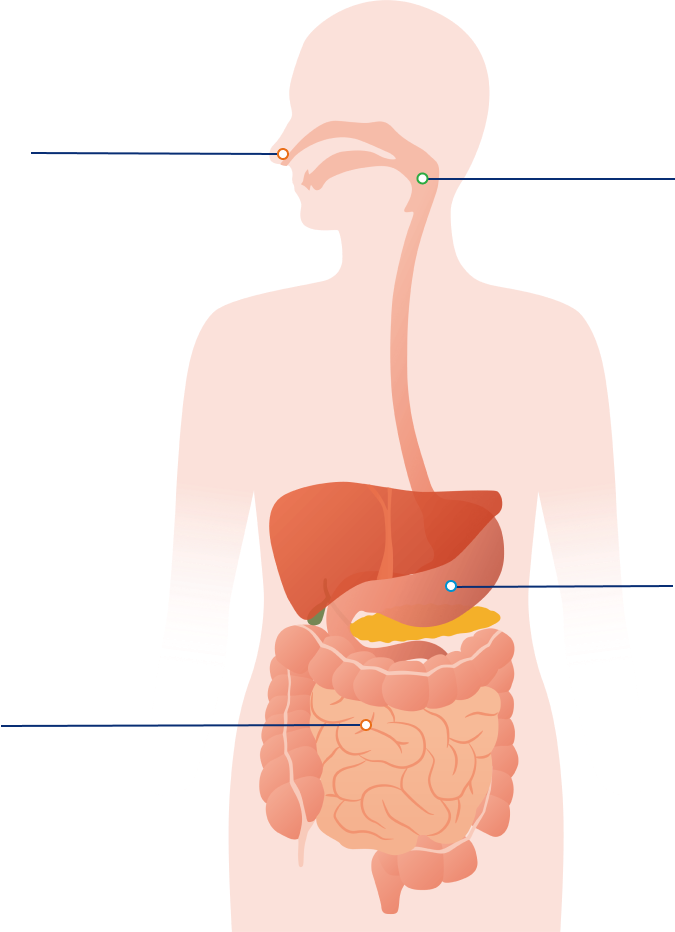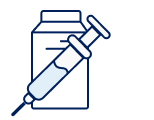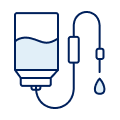Living with a GI Disorder
Learn about a few reasons someone may have GI impairment.

To meet your nutritional needs, your doctor may have prescribed home enteral nutrition - commonly known as home tube feeding. “Tube feeding” means that a liquid, nutrient-rich formula flows gently through a tube into your stomach or intestine.
Tube feeding formulas are very important when you are not able to eat or digest food normally. Just like regular food, your tube- feeding formula will provide calories and essential nutrients, such as protein, carbohydrates, fat, and vitamins and minerals, to help you maintain sufficient nutrition.
There are several different locations where a feeding tube may be placed. Each of these locations allows the nutrients in the formula to be used by your body just as if you were eating a regular meal.
NJ-tube (nasojenjunal)
This feeding tube passes through the nose, throat and esophagus, continues through the stomach, and ends in the second section of your small intestine.
J-Tube (jejunostomy)
This tube is inserted through the abdominal wall directly into the jejunum, which is the second section of your small intestine.
NG-tube (nasogastric)
This feeding tube passes through the nose, throat and esophagus and ends in your stomach.
G-tube (gastrostomy tube)
This feeding tube is inserted through the abdominal wall directly into your stomach.
NJ-tube (nasojenjunal)
This feeding tube passes through the nose, throat and esophagus, continues through the stomach, and ends in the second section of your small intestine.
J-Tube (jejunostomy)
This tube is inserted through the abdominal wall directly into the jejunum, which is the second section of your small intestine.

NG-tube (nasogastric)
This feeding tube passes through the nose, throat and esophagus and ends in your stomach.
G-tube (gastrostomy tube)
This feeding tube is inserted through the abdominal wall directly into your stomach.

A syringe is typically used to deliver a controlled amount of formula through your feeding tube within a short period of time several times a day.

A set amount of formula is delivered, typically with a feeding pump, over a predetermined time (throughout the day and/or night).

Formula flows out of a bag and into your tube by gravity. This method is slower than feeding with a syringe and uses a roller clamp on the bag’s tubing to control the rate.

For adults and older children (age 14+) witih GI impairment, complete nutrition that's easy to absorb and digest.

For children ages 1-13 with GI impairment, complete nutrition that's easy to absorb and digest.